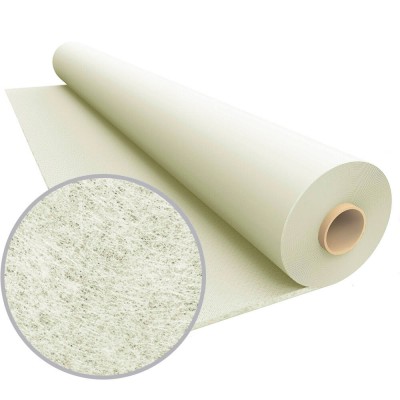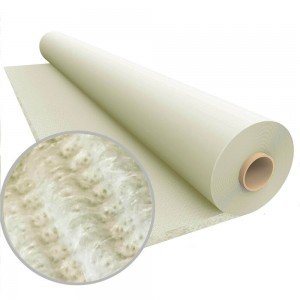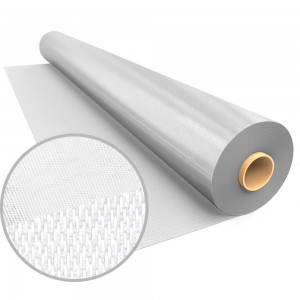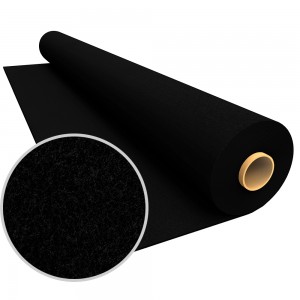INSULATING MAT NT FIBERGLASS 1500
THERMAL INSULATING FIBERGLASS MAT
Texfire’s item NT FIBERGLASS 1500 is a non-woven E-Glass fiberglass plush of 1.500 g/m2 and 10 mm (+-2) width. NT FIBERGLASS 1500 fibre-bonded mat has a density of 130 kg/m3 that Texfire considers optimal to achieve the lesser thermal conductance, improving its insulating features. E-glass fiberglass, inherent fire resistant, can withstand temperatures of 500ºC in continuous works and guarantee its resistance to fire during all its useful life. In addition, its fibre-bonded structure turns it into a light, soft and malleable item that adapts suitably to complex geometries. NT FIBERGLASS 1500 plush does not burn, nor melt or leaks.
El no-tejido punzonado NT FIBERGLASS 1500 fibre-bonded non-woven fabric is used as a filling or internal layer in thermal mats or textile laggings due to its fire resistant and insulating features. It is an essential element in multi-layered laminations used to tailor fire resistant cases and quilts. Being a non-woven fabric, it has low mechanical resistance and can release fibers during its handling, due to this reason, it is recommended to use it as an internal layer in laminations, together with other fabrics with higher dimensional stability. Excellent thermal barrier.
NT FIBERGLASS 1500 has been tested in internal laboratories with the following tests: ISO 9151 (convective heat), result B2, NFP 92502 (reaction to fire) with a Class M1 classification. It also meets the standards of regulation EN ISO 15025 with an A1-A2 classification (Limited flame spreading), and meets ISO 17493 (Resistance to heat).
FEATURES
- It resists sustained temperatures of 500ºC during long periods.
- Grammage 1.500 g/m2, thickness 10 mm (+-2), useful width 100 cm.
- Free of asbestos and toxic gases.
- Density of 130 kg/m3.
- Thermal and acoustic insulator.
- Light and malleable.
- Fibre-bonded structure, low resistance to traction.
- Inherent fire resistant, does not burn, nor melt or leaks.
- Intrinsic features of the fibers, don’t decrease over time, does not expire.
Data sheet
- Convective heat
- ISO 9151 | B2
- Radiant heat
- ISO 6942 | C3
- Fire reaction
- NF P 92503 | M1 CLASS
- Flame propagation
- ISO 15025 | A1 - A2
- Heat resistance
- ISO 17493 | 260 ºC : PASS
APPLICATIONS.
- Thermal mat filling.
- Laggings.
- Flame retardant acoustic panels.
- Thermal case.
SECTORS.
- Petrochemical.
- Food industry.
- Tapestries and flame retardant linings.
- Metal foundries.
- Automotive and transports.
- Construction.
- Naval industry.
- Glass foundry sector.
USE RECOMMENDATIONS.
Non-woven structures tend to release fibers that can irritate eyes, nose, throat and skin. A skin rash can appear when fibers are embedded in the skin’s external layer. But long-term effects on health shouldn’t be produced when touching the fiberglass. There is no evidence that fiberglass causes cancer in people.
Handling and caution indications for fiberglass and silica fiber non-woven fabrics.
- It is recommended to handle it in an area isolated from the rest to avoid a possible contamination of fibers and dust. It is important to have an extraction system, vents or vacuuming in the room to avoid fiber and dust accumulation.
- Use long-sleeve clothes and protection gloves in order to avoid contact and skin irritation.
- Use a mask covering the nose and mouth to avoid fiber inhalation.
- Use safety glasses with lateral protectors to protect the eyes.
- In case of irritation by contact with fiberglass or silica fibers, eyes must be washed with water and any area of the exposed skin must be washed with soap and warm water to erase the fibers.
- Garments used during work with fiberglass and silica fiber must be removed carefully and washed separately from other clothes.







